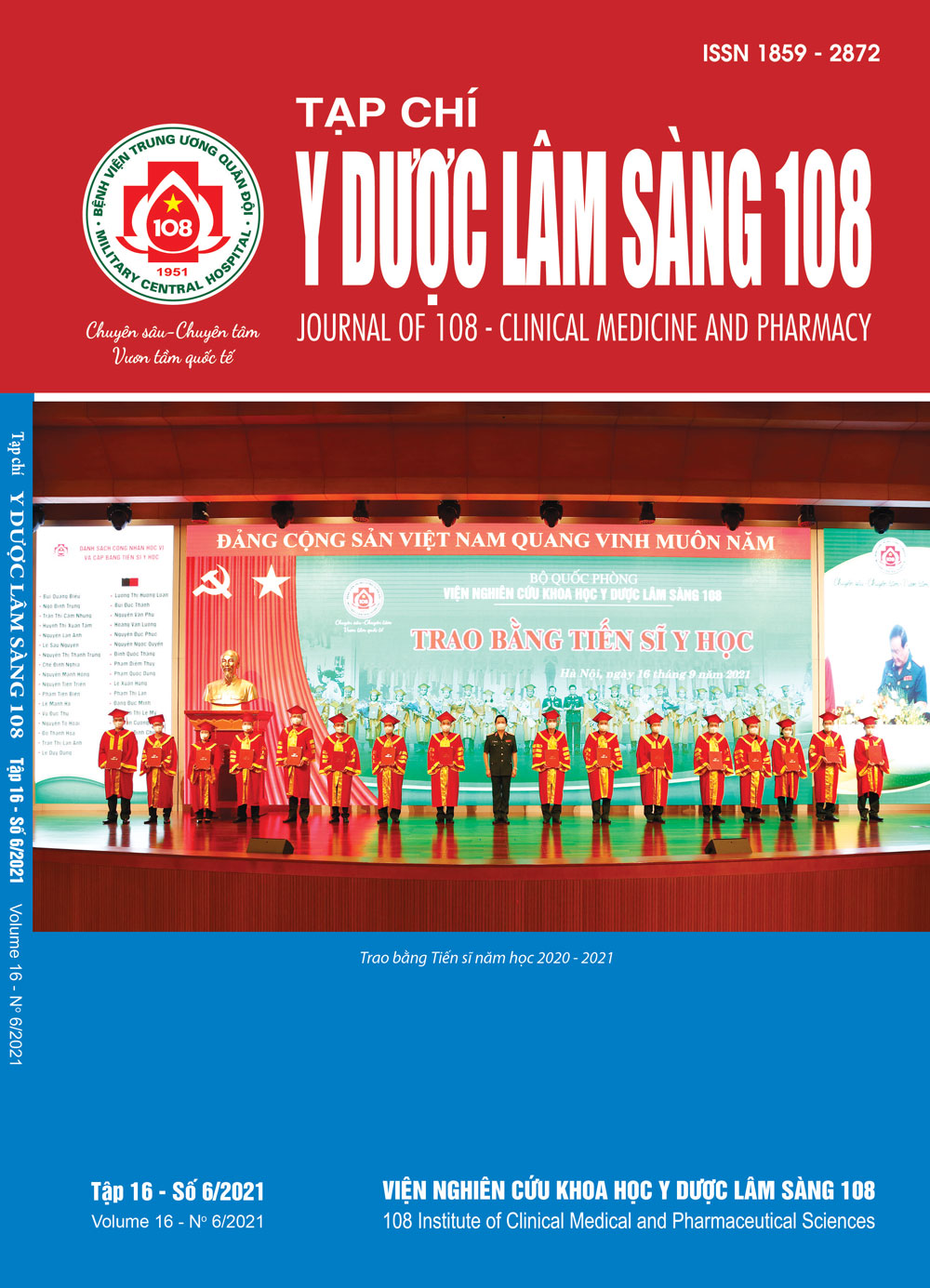Relationship between H-FABP with some cardiovascular events and mortality during the in-hospital stay and 30-day follow-up after STEMI
Main Article Content
Keywords
Abstract
Objective: To research on the relationship between H-FABP with cardiovascular events and mortality prognosis during the in-hospital stay and 30-day follow-up after STEMI. Subject and method: A descriptive, prospective study, 146 STEMI patients were admitted to 175 Military Hospital from 09/2017 to 06/2020; quantification of H-FABP based on turbidimetric immunoassay (Randox). Result: H-FABP of the in-hospital stay and 30-day follow-up major cardiovascular events and death group was higher than those of the other group (p<0.01). H-FABP had good value in the prediction of in-hospital mortality with AUC = 0.729, 95%CI: 0.63 - 0.83, p<0.01, cut-off point was 62.75ng/ml. Combining H-FABP with routine cardiovascular markers or with TIMI or GRACE scores both increased the AUC value in mortality prognosis during hospital stay with AUC: 0.746 - 0.856, p<0.01. During the 30-day follow-up period, the group of patients at the time of admission with H-FABP concentration > 62.75ng/ml would have a higher risk of major cardiovascular events than the other group, with HR = 8.66, 95%CI: 1.04 - 72.97, p<0.05. Conclusion: H-FABP had a good prognosis value of the risk of mortality and major cardiovascular events during the in-hospital stay and 30-day follow-up after STEMI.
Article Details
References
2. Viswanathan K, Kilcullen N, Morrell C et al (2010) Heart-type fatty acid-binding protein predicts long-term mortality and re-infarction in consecutive patients with suspected acute coronary syndrome who are troponin-negative. Journal of the American College of Cardiology 55: 2590-2598.
3. Ibanez B, James S, Agewall S et al (2017) 2017 ESC Guidelines for the management of acute myocardial infarction in patients presenting with ST-segment elevation: The Task Force for the management of acute myocardial infarction in patients presenting with ST-segment elevation of the European Society of Cardiology (ESC). Eur Heart J 39(2):119-177.
4. Wang Y, Li J, Zheng X et al (2018) Risk factors associated with major cardiovascular events 1 year after acute myocardial infarction. JAMA Network Open 1(4): 181079-181079.
5. Banu S, Tanveer S, Manjunath CN (2015) Comparative study of high sensitivity troponin T and heart-type fatty acid-binding protein in STEMI patients. Saudi Journal of Biological Sciences 22(1): 56-61.
6. Giao Thị Thoa (2018) Nghiên cứu nồng độ H-FABP trong chẩn đoán và tiên lượng nhồi máu cơ tim cấp. Luận án tiến sĩ Y học, Đại học Y học Huế.
7. Kilcullen N, Viswanathan K, Das R et al (2007) Heart-type fatty acid-binding protein predicts long-term mortality after acute coronary syndrome and identifies high-risk patients across the range of troponin values. Journal of the American College of Cardiology 50: 2061-2067.
8. O’Donoghue M, de Lemos JA, Morrow DA et al (2006) Prognostic utility of heart-type fatty acid binding protein in patients with acute coronary syndromes. Circulation 114(6): 550-557.
9. Viswanathan K, Kilcullen N, Morrell C et al (2010) Heart-type fatty acid-binding protein predicts long-term mortality and re-infarction in consecutive patients with suspected acute coronary syndrome who are troponin-negative. J Am Coll Cardiol 55(23): 2590-2598.
 ISSN: 1859 - 2872
ISSN: 1859 - 2872
